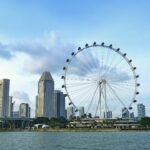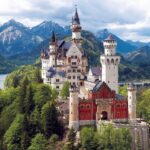
Denmark is a Nordic country in Northern Europe. It is the most populous and politically central constituent of the Kingdom of Denmark, a constitutionally unitary state that includes the autonomous territories of the Faroe Islands and Greenland in the North Atlantic Ocean. European Denmark is the southernmost of the Scandinavian countries, lying southwest of Sweden, south of Norway, and north of Germany.
Spanning a total area of 42,943 km2 (16,580 sq mi), it consists of the peninsula of Jutland and an archipelago of 443 named islands, of which the largest are Zealand, Funen and the North Jutlandic Island. (Source from Wikipedia)


1. Copenhagen
Copenhagen is the capital and most populous city of Denmark. As of 1 January 2022, the city had a population of 805,402 (644,431 in Copenhagen Municipality, 103,608 in Frederiksberg Municipality, 42,723 in Tårnby Municipality, and 14,640 in Dragør Municipality). It forms the core of the wider urban area of Copenhagen (population 1,336,982) and the Copenhagen metropolitan area (population 2,057,142). Copenhagen is situated on the eastern coast of the island of Zealand; another portion of the city is located on Amager, and it is separated from Malmö, Sweden, by the strait of Øresund. The Øresund Bridge connects the two cities by rail and road. Originally a Viking fishing village established in the 10th century in the vicinity of what is now Gammel Strand, Copenhagen became the capital of Denmark in the early 15th century.

![IMG_8820-1200px[1]](https://hobbymart.net/wp-content/uploads/2022/05/IMG_8820-1200px1-768x511.jpg)
![gefion_bridge_-_english_church[1]](https://hobbymart.net/wp-content/uploads/2022/05/gefion_bridge_-_english_church1-768x512.jpg)
![nick-karvounis-484732-unsplash-1024x683[1]](https://hobbymart.net/wp-content/uploads/2022/05/nick-karvounis-484732-unsplash-1024x6831-1-768x512.jpg)

2. Aarhus
Aarhus is the second-largest city in Denmark and the seat of Aarhus municipality. It is located on the eastern shore of Jutland in the Kattegat sea and approximately 187 kilometres (116 mi) northwest of Copenhagen. The largest city in Jutland, Aarhus anchors the Central Denmark Region and the statistical region Landsdel Østjylland (LØ) (lit.: Province East Jutland). The LØ is the second most populous statistical region in Denmark with an estimated population of 903,974 (as of 1 January 2021). Aarhus Municipality defines the greater Aarhus area as itself and 8 adjacent municipalities totalling 952,824 inhabitants (as of 1 January 2021) which is roughly analogous to the municipal and commercial collaboration Business Region Aarhus. The city proper, with an estimated population of 282,910 inhabitants (as of 2021), ranks as the 2nd-largest city in Denmark.
![aros_at_7267_foto_anders_trrup--1[1]](https://hobbymart.net/wp-content/uploads/2022/05/aros_at_7267_foto_anders_trrup-11-768x430.jpg)
![Ø[1]](https://hobbymart.net/wp-content/uploads/2022/05/O1-768x512.jpg)
![AAR-Aarhus-Denmark[1]](https://hobbymart.net/wp-content/uploads/2022/05/AAR-Aarhus-Denmark1-768x279.jpg)
![Smart_Aarhus_crop[1]](https://hobbymart.net/wp-content/uploads/2022/05/Smart_Aarhus_crop1-768x401.jpg)

3. Odense
Odense is the third-largest city in Denmark. It has a population of 180,760 (1 January 2021), and is the main city of the island of Funen. By road, Odense is located 45 kilometres (28 mi) north of Svendborg, 144 kilometres (89 mi) to the south of Aarhus and 167 kilometres (104 mi) to the southwest of Copenhagen. The city is the seat of Odense Municipality and was the seat of Odense County until 1970, and Funen County from 1970 until 1 January 2007, when Funen County became part of the Region of Southern Denmark. Odense has close associations with Hans Christian Andersen who is remembered above all for his fairy tales. He was born in the city in 1805 and spent his childhood years there.
![AdobeStock_116317171-1000x500[1]](https://hobbymart.net/wp-content/uploads/2022/05/AdobeStock_116317171-1000x5001-1-768x384.jpeg)
![c054db36ccbc6a7071b0aa556c236184[1]](https://hobbymart.net/wp-content/uploads/2022/05/c054db36ccbc6a7071b0aa556c2361841-768x512.jpg)
![1200px-Denmark-Odense_City_Hall[1]](https://hobbymart.net/wp-content/uploads/2022/05/1200px-Denmark-Odense_City_Hall1-768x454.jpg)
![800px_COLOURBOX6846338[1]](https://hobbymart.net/wp-content/uploads/2022/05/800px_COLOURBOX68463381-768x576.jpg)
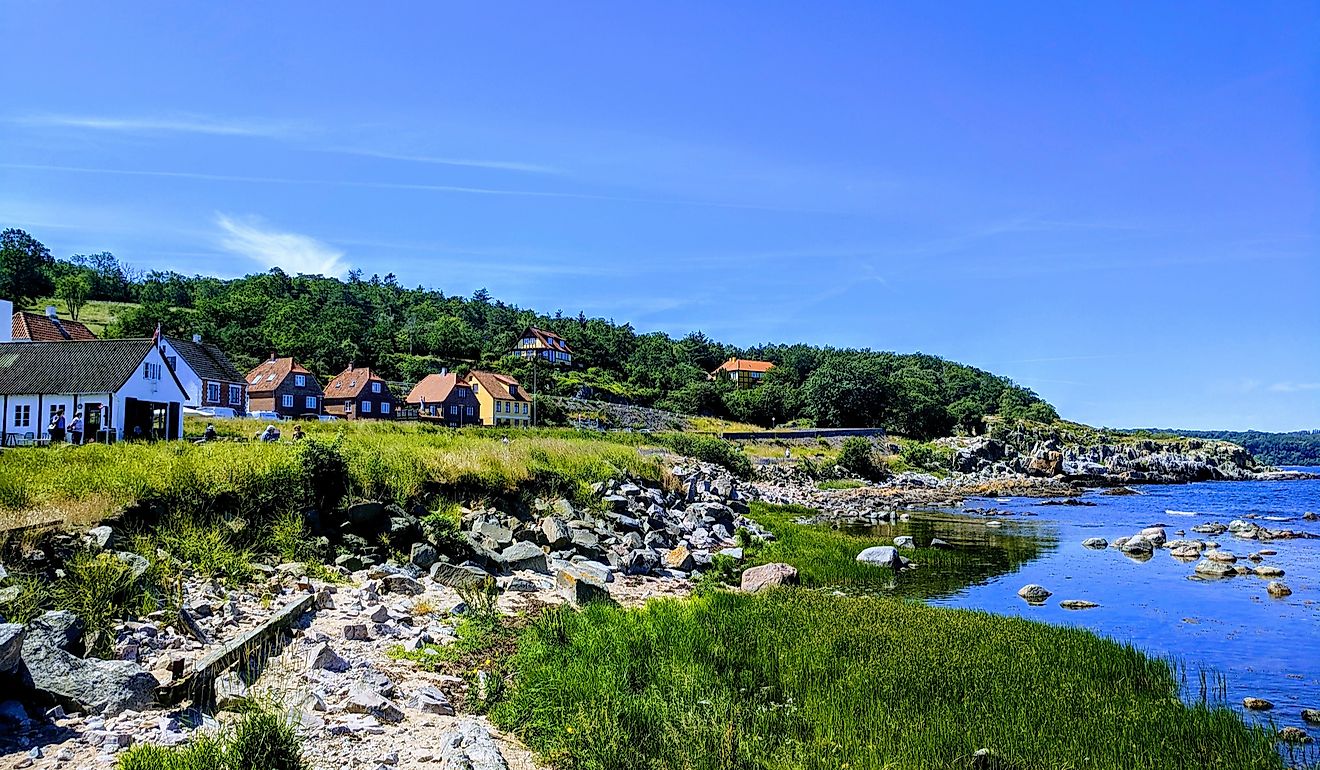
4. Bornholm
Bornholm is a Danish island in the Baltic Sea, to the east of the rest of Denmark, south of Sweden, northeast of Germany and north of Poland. Occupying an area of 588.36 square kilometres (227.17 sq mi), the island had a total population of 39,535 on 1 April 2022. Among Bornholm's chief industrial activities are dairy farming and arts and crafts industries such as glass production and pottery using locally worked clay. Tourism is also important during the summer months. The island is home to many of Denmark's round churches.
![008[1]](https://hobbymart.net/wp-content/uploads/2022/05/0081-768x512.jpg)
![3[1]](https://hobbymart.net/wp-content/uploads/2022/05/31-3-768x576.jpg)
![Bornholm_1[1]](https://hobbymart.net/wp-content/uploads/2022/05/Bornholm_11-768x432.jpg)
![folkemoedet2017-bornholm-1[1]](https://hobbymart.net/wp-content/uploads/2022/05/folkemoedet2017-bornholm-11.jpg)

5. Skagen
Skagen is Denmark's northernmost town, on the east coast of the Skagen Odde peninsula in the far north of Jutland, part of Frederikshavn Municipality in Nordjylland, 41 kilometres (25 mi) north of Frederikshavn and 108 kilometres (67 mi) northeast of Aalborg. The Port of Skagen is Denmark's main fishing port and it also has a thriving tourist industry, attracting 2 million people annually.
![1-skagen-denmark-lighthouse-grey-tower-olaf-schulz[1]](https://hobbymart.net/wp-content/uploads/2022/05/1-skagen-denmark-lighthouse-grey-tower-olaf-schulz1-768x512.jpg)
![Skagen-Fishpacking-Houses-Skagen-Turistbureau-1280x640[1]](https://hobbymart.net/wp-content/uploads/2022/05/Skagen-Fishpacking-Houses-Skagen-Turistbureau-1280x6401-1-768x384.jpg)
![SkagenPort1TownView-2017-09-21-02-12[1]](https://hobbymart.net/wp-content/uploads/2022/05/SkagenPort1TownView-2017-09-21-02-121-768x511.jpg)
![184-872663628675[1]](https://hobbymart.net/wp-content/uploads/2022/05/184-8726636286751-768x422.jpg)
6. Roskilde
Roskilde, located 30 km (19 mi) west of Copenhagen on the Danish island of Zealand, is the main city in the eponymous municipality. With a population of 51,793 (as of 1 January 2021), the city is a business and educational centre for the region and the 10th largest city in Denmark. It is governed by the administrative council of Roskilde Municipality. Roskilde has a long history, dating from the pre-Christian Viking Age. Its UNESCO-listed Gothic cathedral, now housing 39 tombs of the Danish monarchs, was completed in 1275, becoming a focus of religious influence until the Reformation.
![c2e4ecf0d8[1]](https://hobbymart.net/wp-content/uploads/2022/05/c2e4ecf0d81.jpg)
![069b00be6b7d4288bbbfbd8c08cf856c913b9e1629dbfc437e1aaf48f58d312c[1]](https://hobbymart.net/wp-content/uploads/2022/05/069b00be6b7d4288bbbfbd8c08cf856c913b9e1629dbfc437e1aaf48f58d312c1-768x486.jpg)
![8036619426_57a02d2cf3_b[1]](https://hobbymart.net/wp-content/uploads/2022/05/8036619426_57a02d2cf3_b1-768x576.jpg)
![7[1]](https://hobbymart.net/wp-content/uploads/2022/05/71-1-768x513.jpg)

7. Aalborg
Aalborg is Denmark's fourth largest city with an urban population of 142,937 (2021). The twin city Nørresundby is 600 metres (2,000 ft) across the Limfjord. When including their population of 20.964 (as of 2021), then the Municipality of Aalborg is the third most populous in the country after Copenhagen and Aarhus.[3] By road Aalborg is 64 kilometres (40 mi) southwest of Frederikshavn, and 118 kilometres (73 mi) north of Aarhus. The distance to Copenhagen is 412 kilometres (256 mi) if travelling by road and not using ferries.
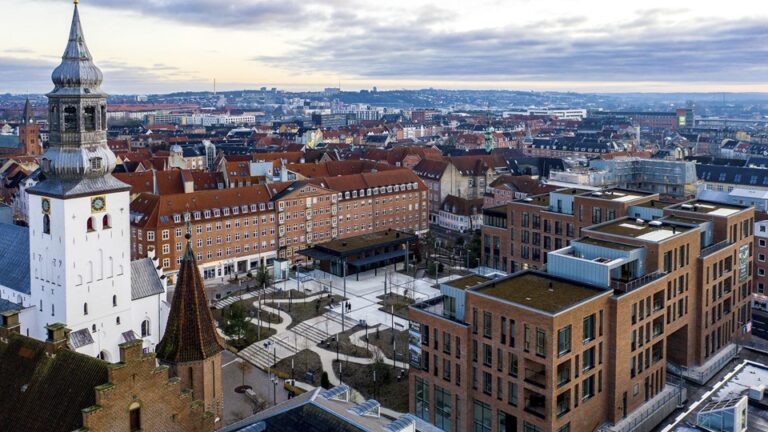
![630x355[1]](https://hobbymart.net/wp-content/uploads/2022/05/630x3551.jpg)
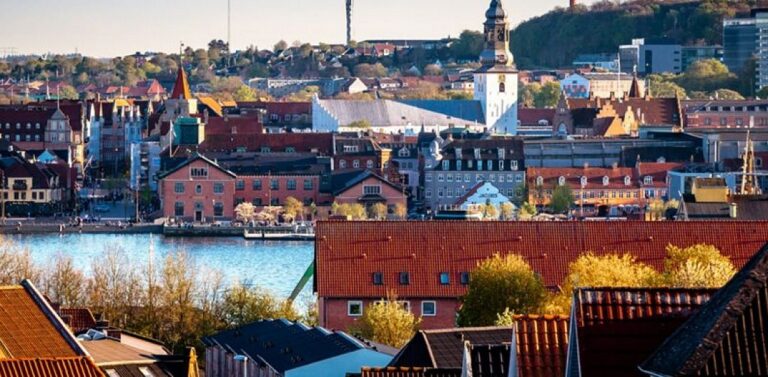
![Aerial-view-of-Aalborg-4[1]](https://hobbymart.net/wp-content/uploads/2022/05/Aerial-view-of-Aalborg-41-768x493.jpg)
8. Elsinore
Helsingør is a city in eastern Denmark. Helsingør Municipality had a population of 62,686 on 1 January 2018. Helsingør and Helsingborg in Sweden together form the northern reaches of the Øresund Region, centered on Copenhagen and Malmö. The HH Ferry route connects Helsingør with Helsingborg, 4 km (2.5 miles) across the Øresund. It is known for its castle Kronborg, which William Shakespeare presumably had in mind for his famous play Hamlet.
![020819-kronborg-elsinore-denmark[1]](https://hobbymart.net/wp-content/uploads/2022/05/020819-kronborg-elsinore-denmark1-768x262.jpg)
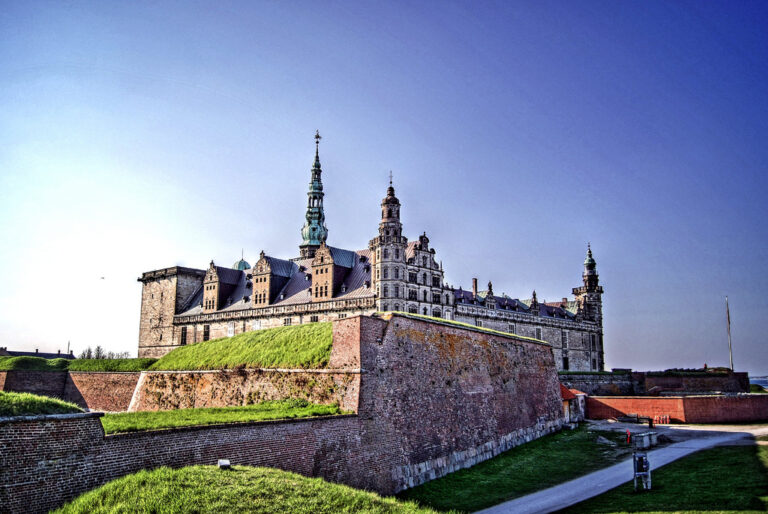
![020819_Frederiksborg_Castle[1]](https://hobbymart.net/wp-content/uploads/2022/05/020819_Frederiksborg_Castle1-768x416.jpg)
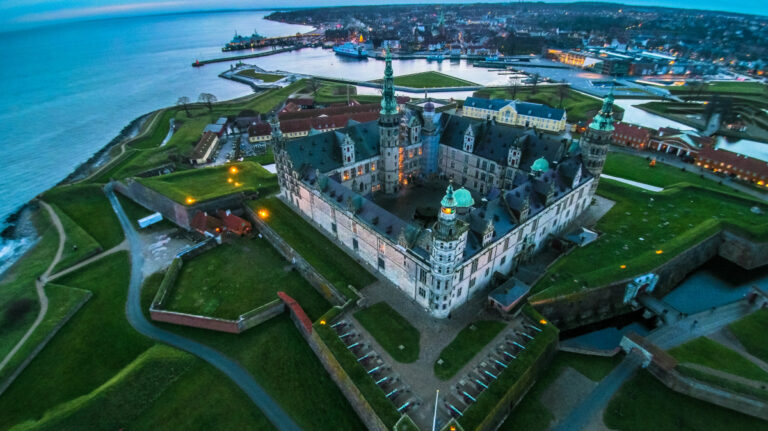
9. Gilleleje
Gilleleje is one of the main towns of the Gribskov municipality in Region Hovedstaden in Denmark. The town is at the northernmost point of Sjælland in Denmark. As of 1 January 2021, it has a population of 6,662.
![gilleleje[1]](https://hobbymart.net/wp-content/uploads/2022/05/gilleleje1-768x248.png)
![240879_Gilleleje_havn_red[1]](https://hobbymart.net/wp-content/uploads/2022/05/240879_Gilleleje_havn_red1-1-768x432.png)
![50e72691e19c409afd172dd139225ee64c8fdf6ef5839e06a57e4714ce97e554[1]](https://hobbymart.net/wp-content/uploads/2022/05/50e72691e19c409afd172dd139225ee64c8fdf6ef5839e06a57e4714ce97e5541-768x510.jpg)
![denmark[1]](https://hobbymart.net/wp-content/uploads/2022/05/denmark1-768x576.jpg)
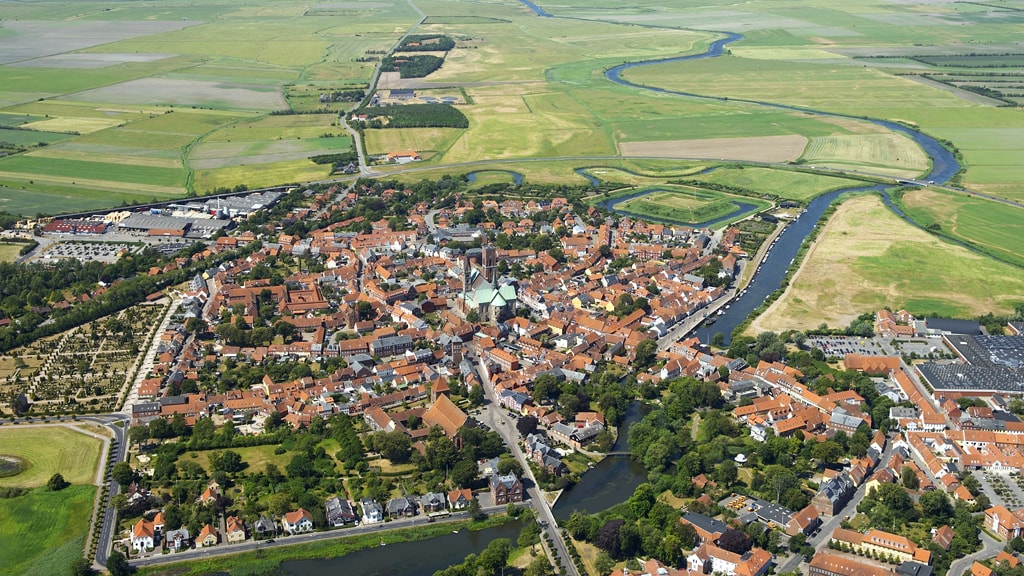
10. Ribe
Ribe is a Danish town in south-west Jutland, with a population of 8,287 (2021).[2] It is the seat of the Diocese of Ribe covering southwestern Jutland. Until 1 January 2007, Ribe was the seat of both a surrounding municipality, and county. It is now part of the enlarged Esbjerg Municipality in the Region of Southern Denmark. Ribe is the oldest extant town in Denmark and in Scandinavia, established in the early eighth century in the Germanic Iron Age.
![Ribe-21-1024x684[1]](https://hobbymart.net/wp-content/uploads/2022/05/Ribe-21-1024x6841-1-768x513.jpg)

![49769640843_567bdb3803_c[1]](https://hobbymart.net/wp-content/uploads/2022/05/49769640843_567bdb3803_c1-768x512.jpg)
![Ribe-21-1024x684[1]](https://hobbymart.net/wp-content/uploads/2022/05/Ribe-21-1024x6841-2-768x513.jpg)



